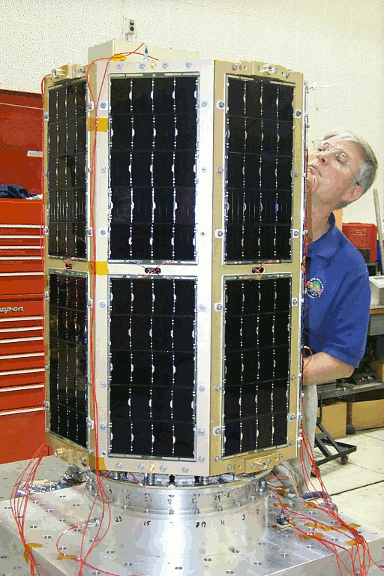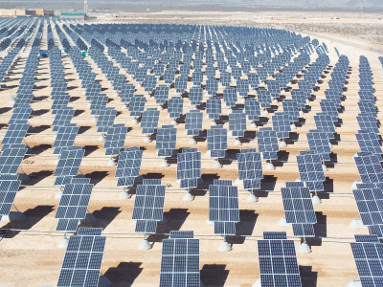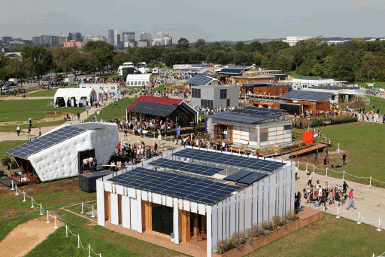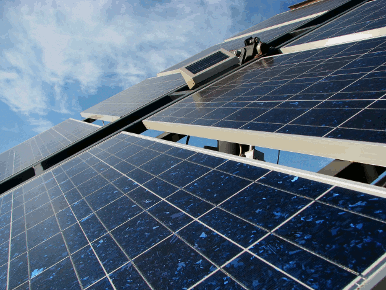Posted Sat, 08/18/2012 - 19:01 by Paul
The ability to split water into its consituent elements of hydrogen and oxygen using electolysis has been known for over 100 years. This process can provide large amounts of hydrogen which can be used to power our homes and cars in a non-polluting and renewable way. However, traditional methods of electrolysis require highly purified water to ensure that components in the hydrolysis system do not become fouled up. In addition, an already-existing method of producing electricity is required to power the hydrolysis process itself.
Posted Sat, 08/11/2012 - 21:41 by Paul
As we all know, the production of solar energy from photovoltaic cells can be used to power our homes and appliances without producing greenhouse gasses which pollute the air. No fossil fuels are burned in the process of creating solar power, but one thing that many people don't take into account is the fact that the plastics which are used to make much of the solar cells themselves are usually made from petrochemicals which are derived from petroleum, in other words crude oil.
Posted Sun, 06/03/2012 - 18:34 by Paul
 The MidSTAR-1 space satellite with its high efficiency gallium arsenide solar cells.
The MidSTAR-1 space satellite with its high efficiency gallium arsenide solar cells. Picture by
USNASolar cells are becomng increasingly commonplace and research is constantly being done into new materials which may be introduced in the future to improve efficiency and cost-effectiveness. We have learned over the years that it's never a good idea to bet against silicon completely being replaced, but there are some very interesting thin film materials which are coming into play.
Posted Wed, 05/30/2012 - 00:16 by Paul
The use of building integrated photovoltaics is one of the inspired ideas that organisations like USA's National Renewable Energy Laboratory are trying to move toward being deployed in a large scale. When considering the design of a new building, the ideal situation would be that people could use the solar cells as part of the skin of the building by replacing the traditional materials used for a roof or facade. This could potentially save money with the photovoltaic module serving both functions of the waterproof skin of the building and generating electicity.
Posted Mon, 05/28/2012 - 17:41 by Paul
 Large Solar Panel array at Nellis Air Force Base in Nevada
Large Solar Panel array at Nellis Air Force Base in Nevada Picture by Airman 1st Class Nadine Y. Barclay
Many people first became excited about convering sunlight to usable energy to power devices in the 1970s when the first boom in solar power happened. There is something special about the direct conversion of sunlight to electricity - a solid state device that sits there quietly and does its job with no movement or moving parts. Solar cells have been deployed all around the world which are often still working even as much as 25 to 30 years after they were first installed without maintenance or the need for refurbishment in a way that a mechanical system would require.
Posted Sun, 05/27/2012 - 18:31 by Paul

Green House Designs at the Solar Decathlon in Washington.
Photo courtesy of Stefano Paltera/U.S. Department of Energy Solar Decathlon. Click for a larger version which will open in a new page.
The Solar Decathlon is an interesting and exciting competition in the USA where teams of college and university students compete to design the most attractive, effective and efficient solar house. It is the brainchild of the program manager of photovoltaics at the USA Department of Energy, Richard King. He has been involved not only in the research and development side of things but also in trying to think about what will stimulate the public's interest in using energy more efficiently.
Posted Mon, 05/21/2012 - 18:17 by Paul
 Picture of Solar Panels
Picture of Solar Panels by Patrick W. Moore of setsailmedia.com
Often people question how efficient solar cells really are, especially if you're in areas where you're not getting full sunlight, for example in a place like Canada. For terrestrial applications, as opposed to outer space which is another place where photovoltaic cells are utilized, there are a number of products that are commercially used for residential applications. A vast majority of them are based on either multicrystalline silicon or single crystaline silicon.
Posted Sun, 07/11/2010 - 18:28 by Paul
In a record breaking flight this week a solar powered plane successfully completed the highest and longest ever flight by a solar aircraft. The huge wings of the plane, known as the Solar Impulse, and its horizontal stabilizer contain 12,000 silicon mono-crystalline solar cells. Energy from the sun is stored in lithium batteries and used to provide the aircraft's 4 electric engines with the power they need to fly the plane. The Solar Impulse flew throughout the whole night for the first time during the evening of 7th July and morning of 8th July 2010.
Posted Sat, 01/30/2010 - 21:00 by Paul
A completely stand-alone refrigerator powered by solar energy has been developed by the High School of engineering and management of the canton of Vaud and the Albert Schweizer ecological Center in Neuchâtel.
This solar refrigerator is meant for use in sub-Saharan Africa.
Posted Mon, 08/10/2009 - 15:46 by Paul
Size Requirements
Hot water production installations are sized according to the number of people in the household. Surfaces of 1.5 m² per person of flat collector, or 1 m ² per person of vacuum tube collector can be considered to be indicative requirements. The tank should have a capacity about 80 litres per person.